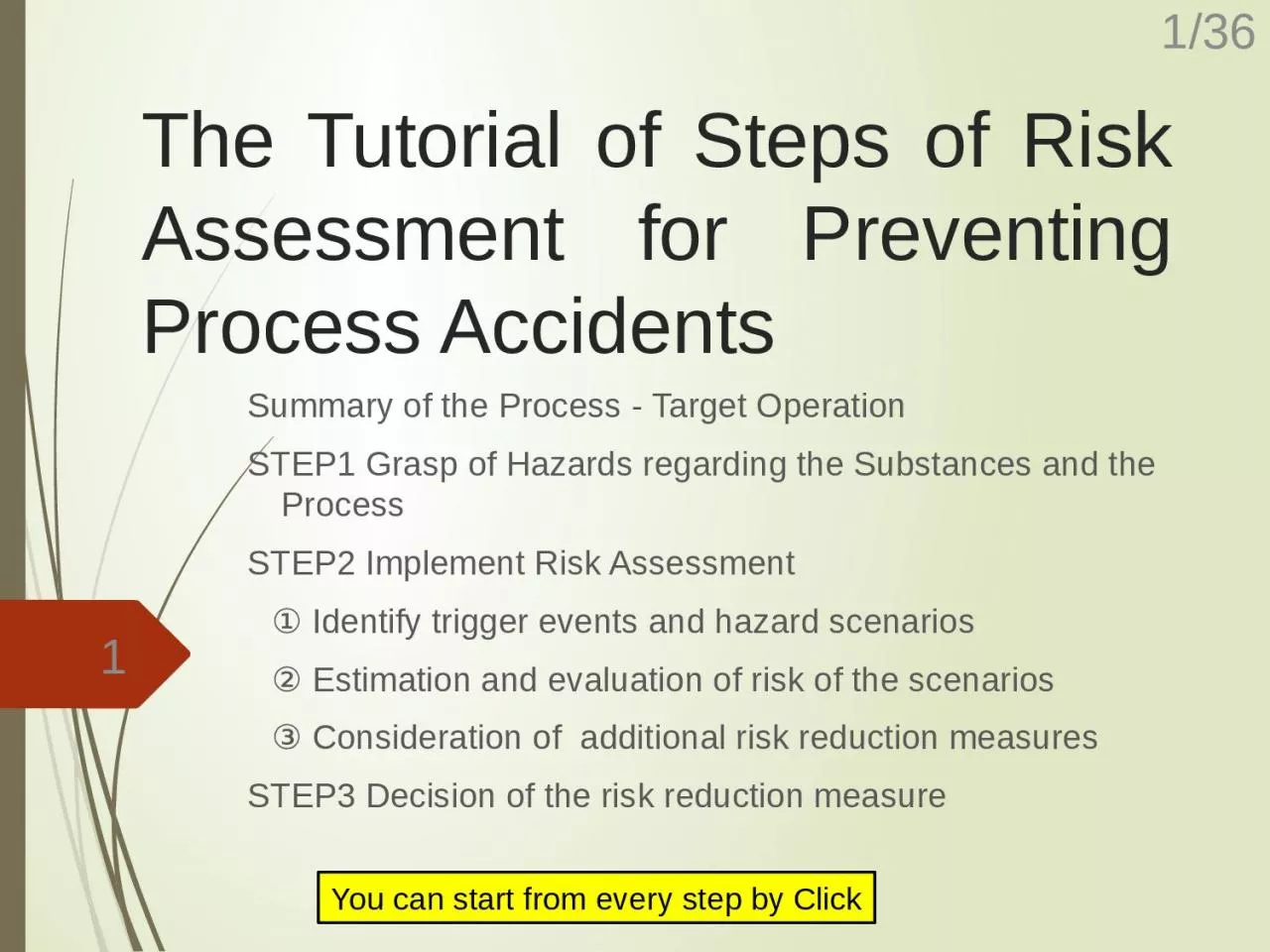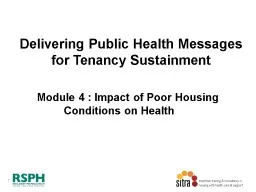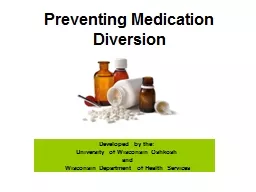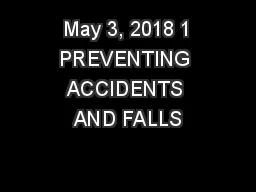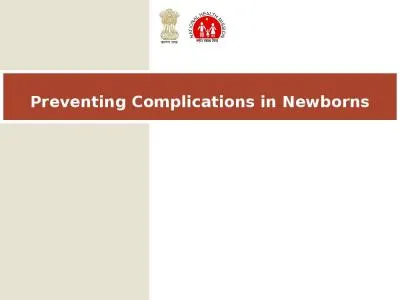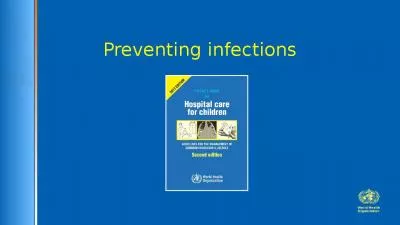PPT-The Tutorial of Steps of Risk Assessment for Preventing Process Accidents
Author : megan | Published Date : 2024-02-09
Summary of the Process Target Operation STEP1 Grasp of Hazards regarding the Substances and the Process STEP2 Implement Risk Assessment ① Identify trigger
Presentation Embed Code
Download Presentation
Download Presentation The PPT/PDF document "The Tutorial of Steps of Risk Assessment..." is the property of its rightful owner. Permission is granted to download and print the materials on this website for personal, non-commercial use only, and to display it on your personal computer provided you do not modify the materials and that you retain all copyright notices contained in the materials. By downloading content from our website, you accept the terms of this agreement.
The Tutorial of Steps of Risk Assessment for Preventing Process Accidents: Transcript
Download Rules Of Document
"The Tutorial of Steps of Risk Assessment for Preventing Process Accidents"The content belongs to its owner. You may download and print it for personal use, without modification, and keep all copyright notices. By downloading, you agree to these terms.
Related Documents

